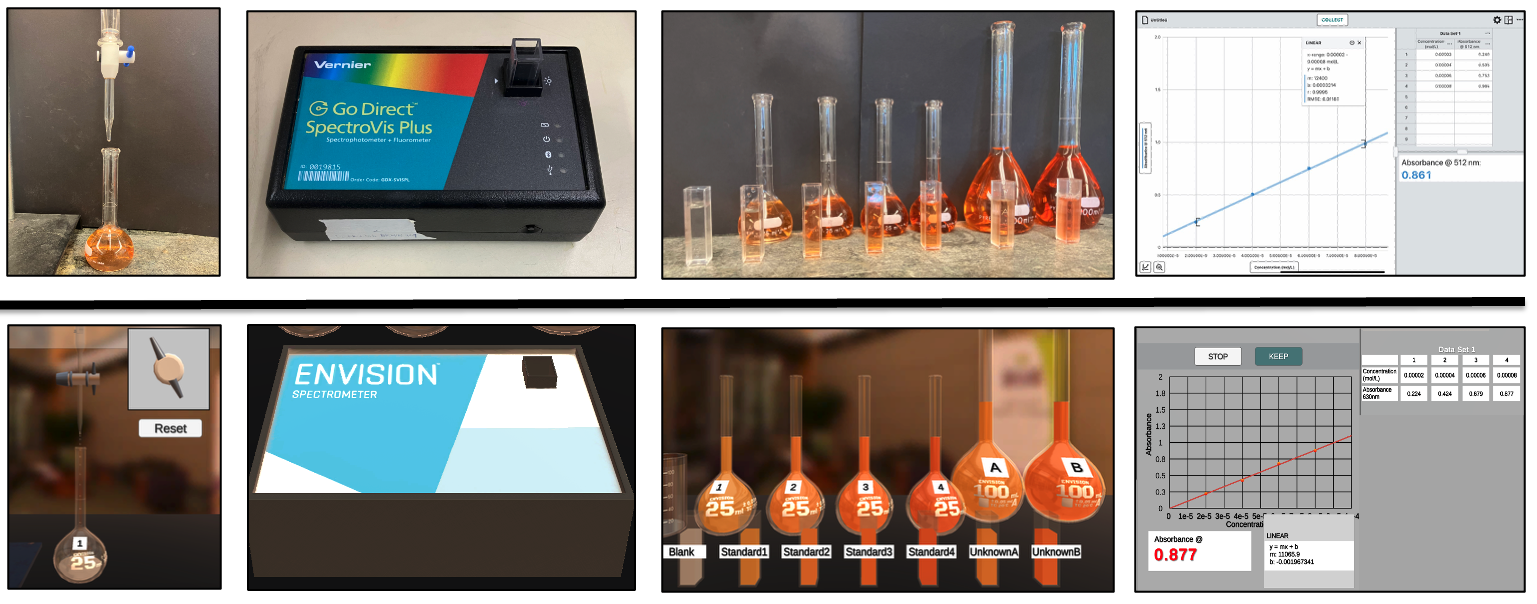Envision Center virtual labs allow chemistry students to conduct experiments from anywhere
Laboratory science is not typically thought of as a field that’s conducive to remote work – but that’s changing, thanks to a partnership between the Rosen Center for Advanced Computing (RCAC)’s Envision Center and the Purdue Department of Chemistry that has led to the development of a half dozen virtual chemistry labs.
The chemistry department originally sought to move laboratory courses online in the early days of the COVID-19 pandemic, which forced students and faculty to stay home. They began recording videos of professors doing experiments and asked students to answer questions about the experiments, but quickly realized that virtual reality could give the students an even more lab-realistic experience.

“They’re quite instructive,” says Jonathan Rienstra-Kiracofe, professor of practice in chemistry and the associate dean for the College of Science at Purdue in Indianapolis, who led the development of the virtual labs alongside the Envision Center.
“A lab that might take two hours in real life will also take about two hours in the virtual setting because the students have to go through all the same steps of collecting data and analyzing the data, and there’s variability built into the data so if they make a mistake in real life they can make the same mistake in the virtual world as well.”
Originally used primarily by students taking General Chemistry 11500 over the summer from locations outside West Lafayette, the virtual labs have found other important applications as well, including being used for students who miss an in-person lab due to extenuating circumstances and need to make it up, as well as by hundreds of students at Purdue in Indianapolis.
Students have also used the virtual labs while completing physical labs. The side-by-side use of virtual and physical labs has resulted in students reporting they have a better experience in the lab, as well as a better understanding of the lab concepts.
In fact, an analysis of student grades shows that students using virtual labs alongside in-person work are making fewer mistakes, says Rienstra-Kiracofe.
“The virtual lab simulations and interactive features helped me learn how to use and handle the equipment, something that is easy to overlook when watching videos or reading lab descriptions” says student Devin Andrew Wang.
“These simulations and interactive features made the labs more enjoyable because they gave me a chance to ‘do’ these experiments, which is arguably the most fun aspect of any lab course.”
Vindhya Mahapatruni Ganti says that her favorite lab was the absorption of light to determine concentration lab.
“The simulation was very well put together. We were able to use actual lab tools to accomplish tasks,” she says. “For example, we got to pour and mix ingredients through the simulation. I might have been able to gather this information from reading it in a lab manual, but doing the lab helped me identify the different types of glassware and how to use them better.”
In the future, Rienstra-Kiracofe hopes the impact of the virtual chemistry labs can be felt beyond Purdue and potentially shared with K-12 educators and other universities.
Student employees of the Envision Center participated in the development of the virtual labs and undergraduate researchers in chemistry were also involved in data collection to benchmark the labs.
To learn more about the Envision Center and see examples of recent projects, visit the Center’s website. For more information about working with the Envision Center, contact envision@purdue.edu.
